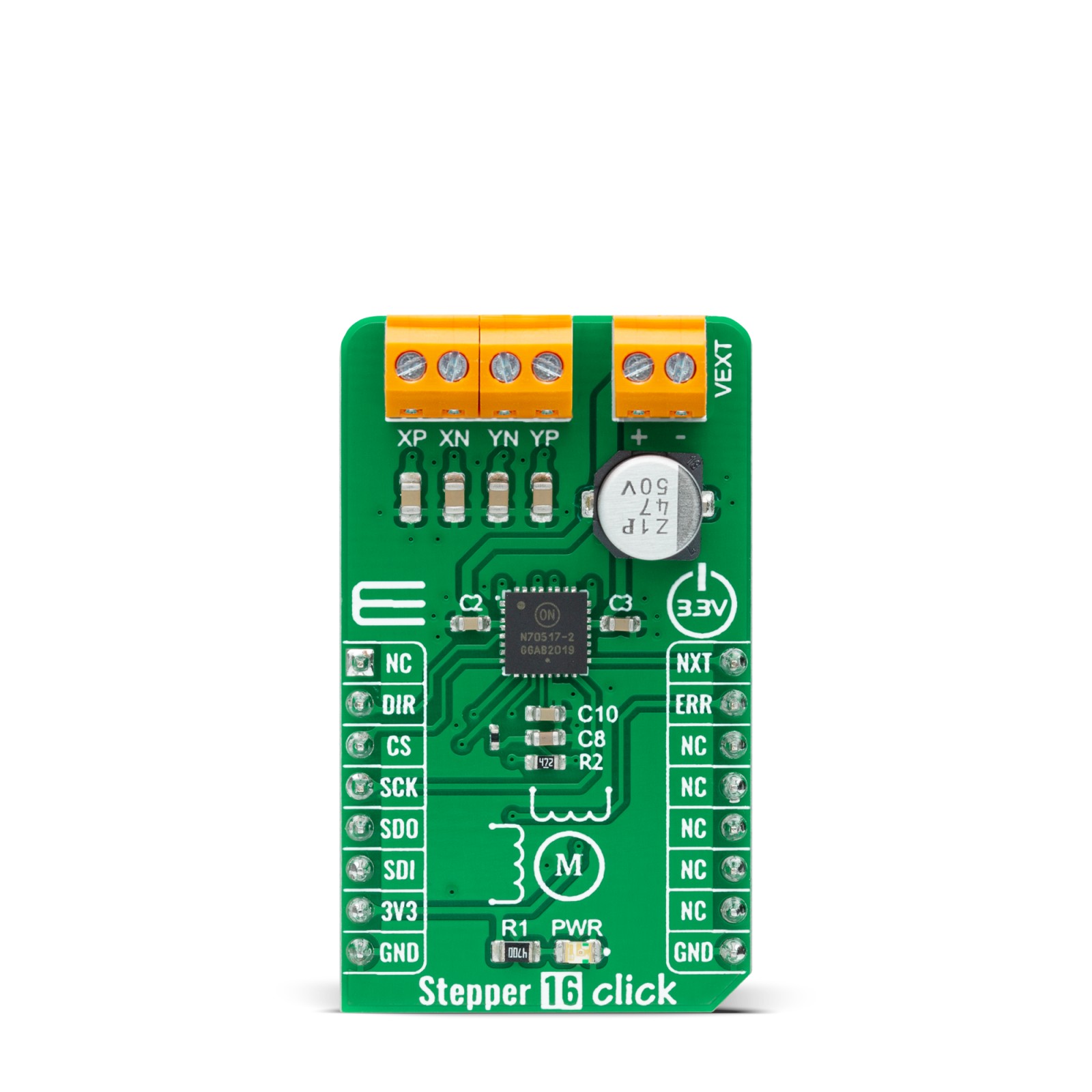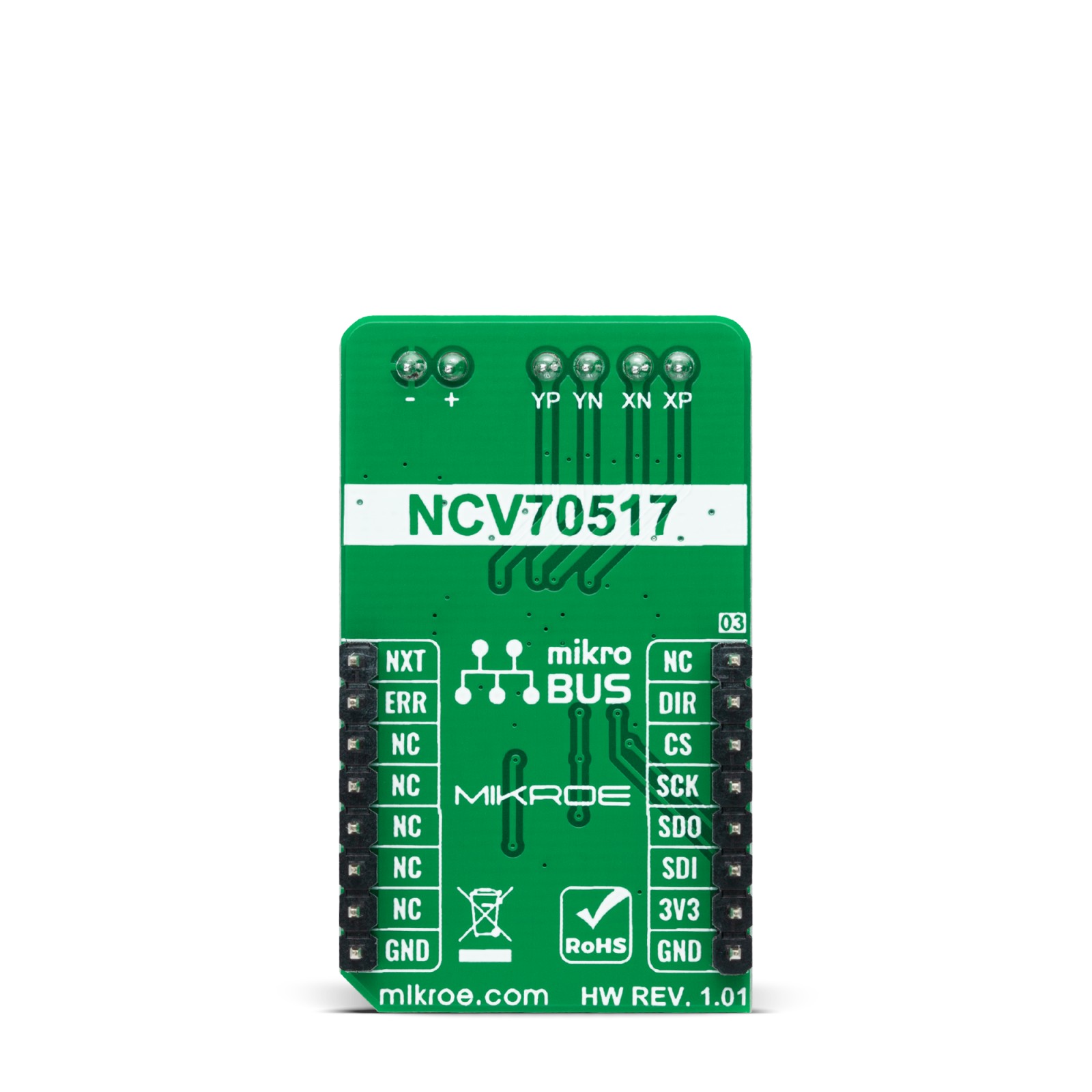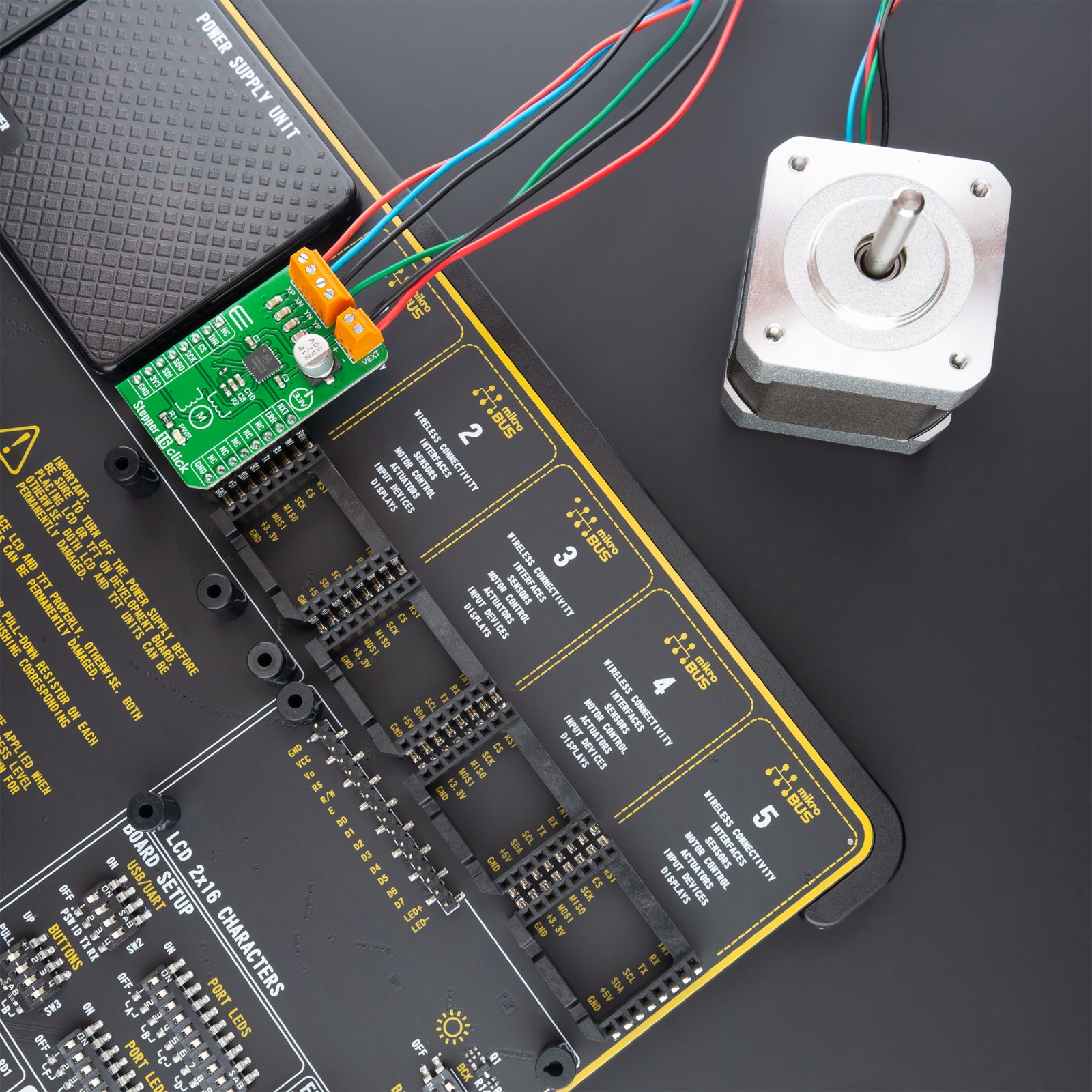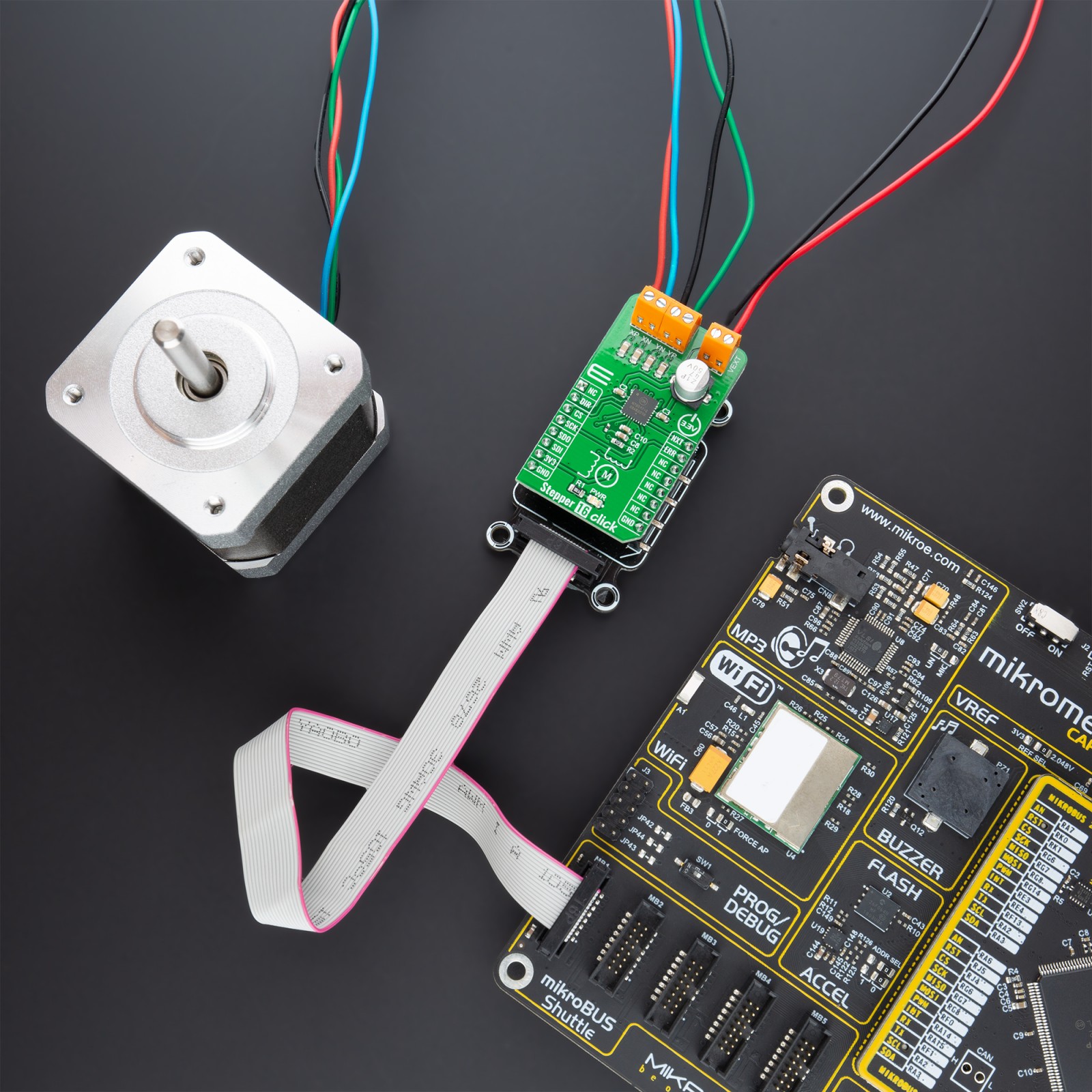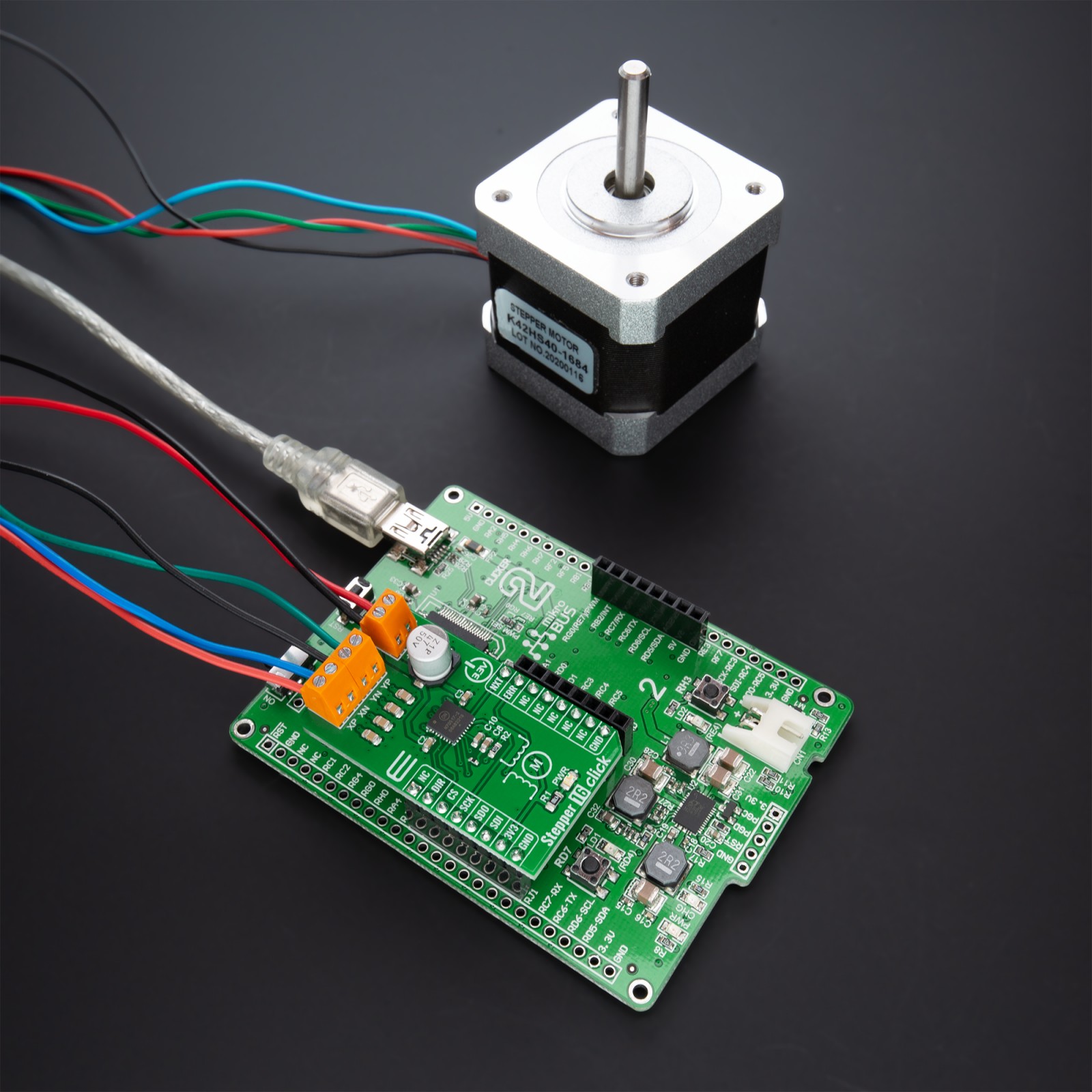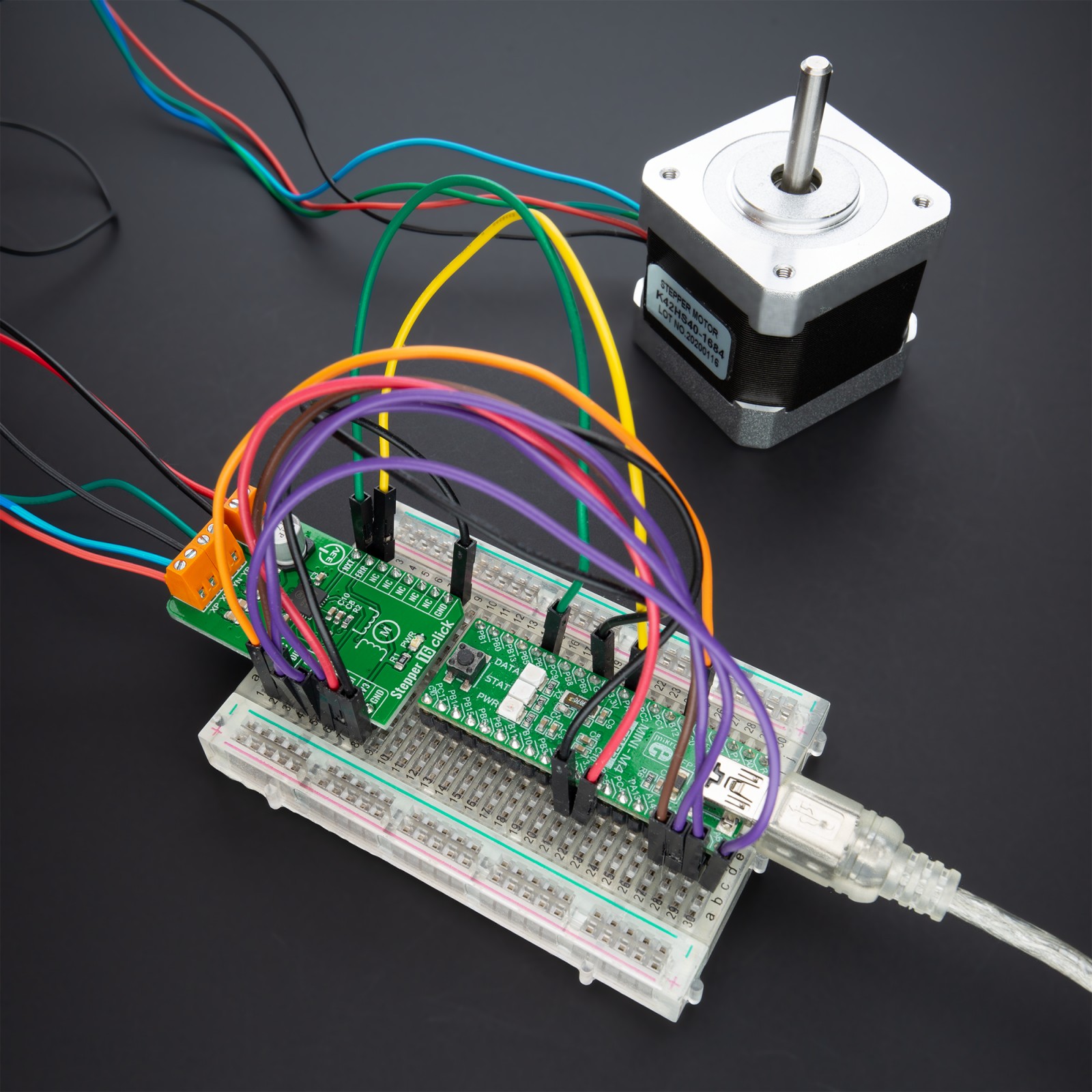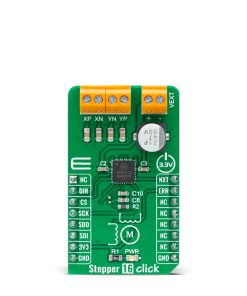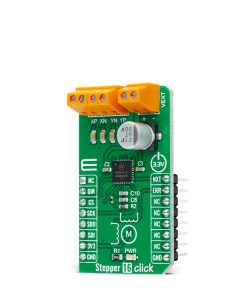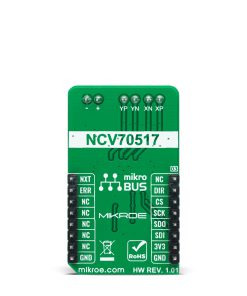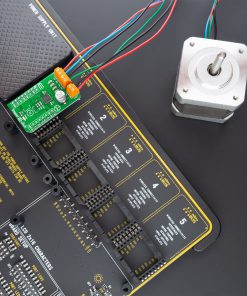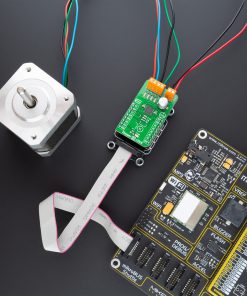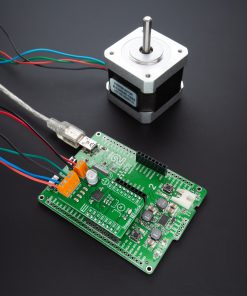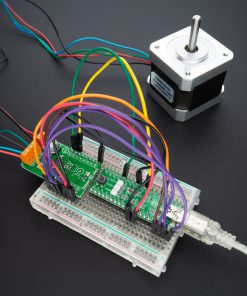Stepper 16 Click
R465.00 ex. VAT
Stepper 16 Click is a compact add-on board that contains a micro-stepping stepper motor driver. This board features the NCV70517, an SPI and I/O configurable motor driver for bipolar stepper motors from onsemi. The NCV70517 contains a current−translation table and takes the next micro−step depending on the clock signal on the NXT input pin and the status of the DIR pin. It also provides an error message if an electrical error, an undervoltage, or an elevated junction temperature is detected. This Click board™ is fully compatible with the automotive voltage requirements and ideally suited for general−purpose stepper motor applications in the automotive, industrial, and applications with fluctuating battery supplies.
Stepper 16 Click is supported by a mikroSDK compliant library, which includes functions that simplify software development. This Click board™ comes as a fully tested product, ready to be used on a system equipped with the mikroBUS™ socket.
Stock: Lead-time applicable.
| 5+ | R441.75 |
| 10+ | R418.50 |
| 15+ | R395.25 |
| 20+ | R380.37 |

